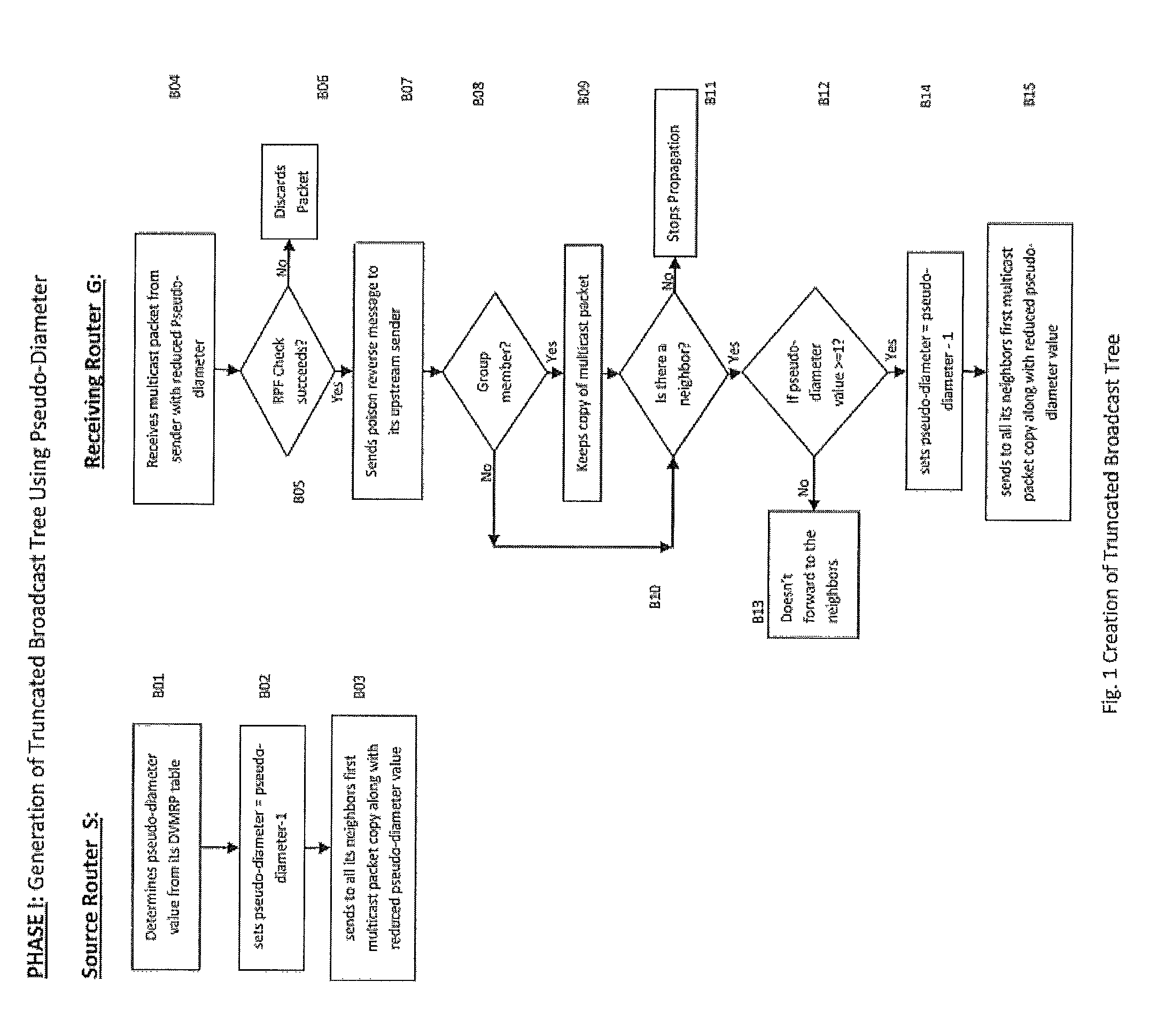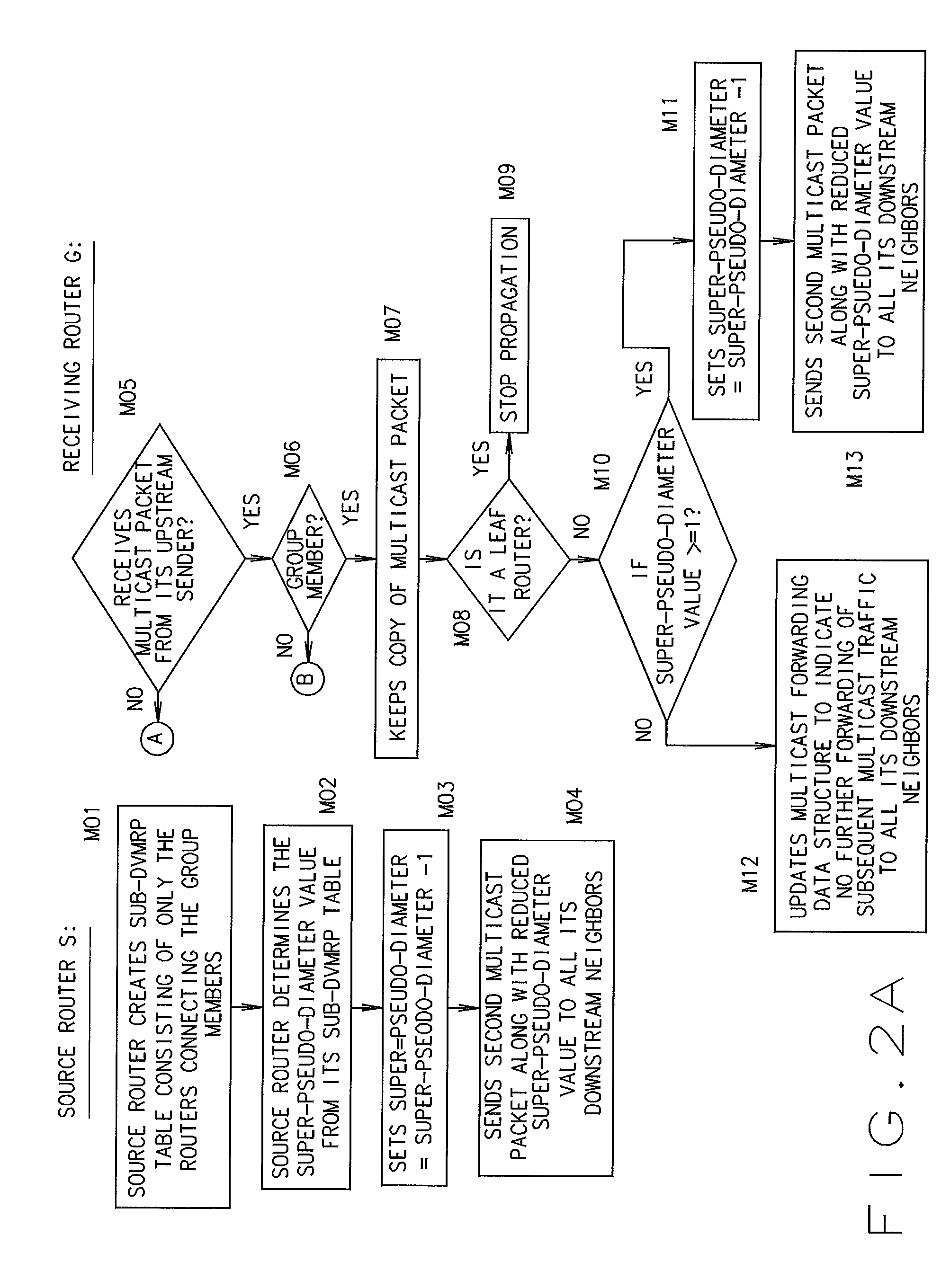Multicast routing protocol for computer networks
a routing protocol and computer network technology, applied in the field of routing protocols, can solve the problems of routers so busy, other communications (i.e., other than), delay in communication, etc., and achieve the effect of reducing the scope of travel of the first packet, reducing the number of prune packets generated, and reducing the number of duplicate packets
- Summary
- Abstract
- Description
- Claims
- Application Information
AI Technical Summary
Benefits of technology
Problems solved by technology
Method used
Image
Examples
Embodiment Construction
[0039]According to the embodiment(s) of the present invention, various views are illustrated in FIG. 1-18 and like reference numerals are being used consistently throughout to refer to like and corresponding parts of the invention for all of the various views and figures of the drawing. Also, please note that the first digit(s) of the reference number for a given item or part of the invention should correspond to the Fig. number in which the item or part is first identified.
[0040]One embodiment of the present technology comprising a method and apparatus for a routing protocol for a router teaches a novel apparatus and method for distance vector multicasting routing. The method and apparatus as disclosed and claimed offers a very meaningful and important new interpretation of the routing information stored in a DVMRP routing table. This interpretation relates to the knowledge of the locations of a multicast source router and the routers connected to hosts with group members in a DVMR...
PUM
 Login to View More
Login to View More Abstract
Description
Claims
Application Information
 Login to View More
Login to View More - R&D
- Intellectual Property
- Life Sciences
- Materials
- Tech Scout
- Unparalleled Data Quality
- Higher Quality Content
- 60% Fewer Hallucinations
Browse by: Latest US Patents, China's latest patents, Technical Efficacy Thesaurus, Application Domain, Technology Topic, Popular Technical Reports.
© 2025 PatSnap. All rights reserved.Legal|Privacy policy|Modern Slavery Act Transparency Statement|Sitemap|About US| Contact US: help@patsnap.com



